Protecting your Eton property depends on reliable roofing—every roof merits skilled attention to prevent leaks, damp, and wasted energy. Serving London and the Home Counties (Kent, Surrey, West Sussex, Berkshire), our team delivers each project with care, compliance, and a focus on lasting results to safeguard your investment.
With decades of expertise, Which Trusted Trader and CITB accreditation, and materials from Welsh Slate, ALM Lead, and Kemper, we’re trusted by local property owners and businesses. Book a free survey today and protect your property.
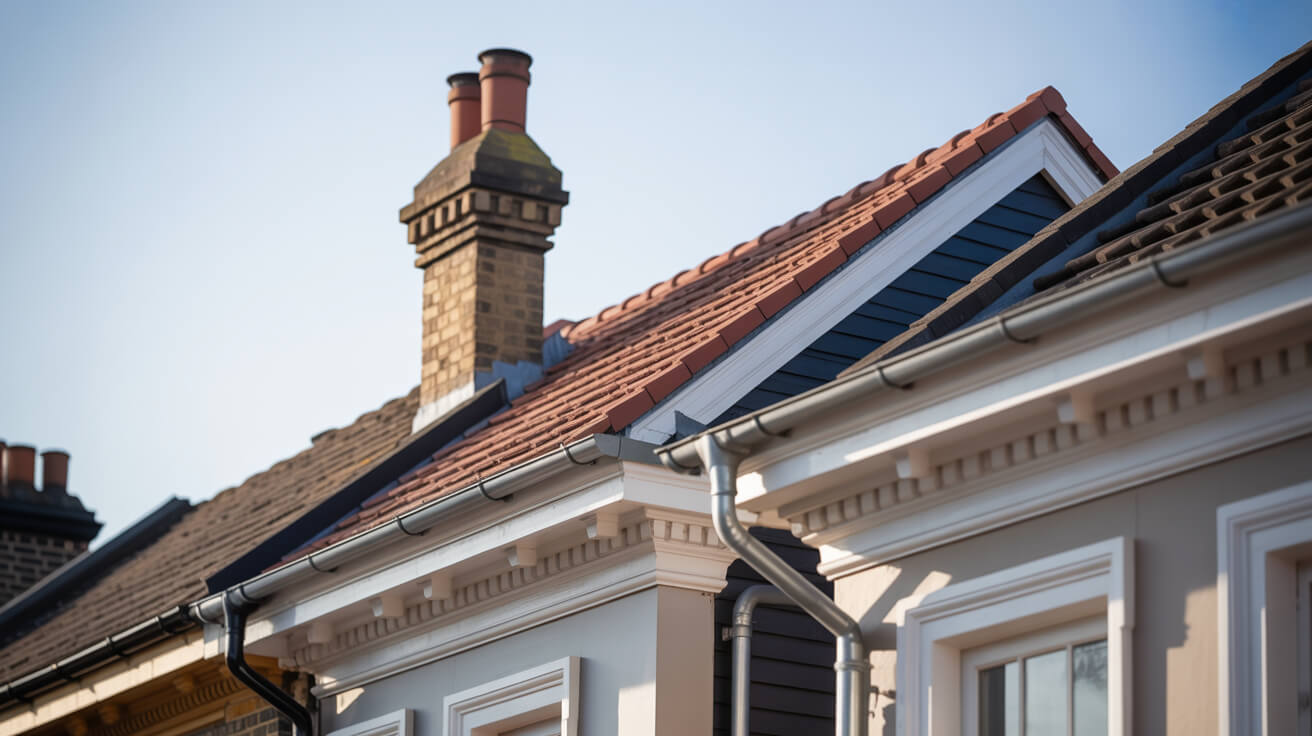
Neglecting roofing issues means leaks that cause damp, lost insulation efficiency, and structural risks. Putting off action always makes eventual repairs costlier and more disruptive for any building owner.
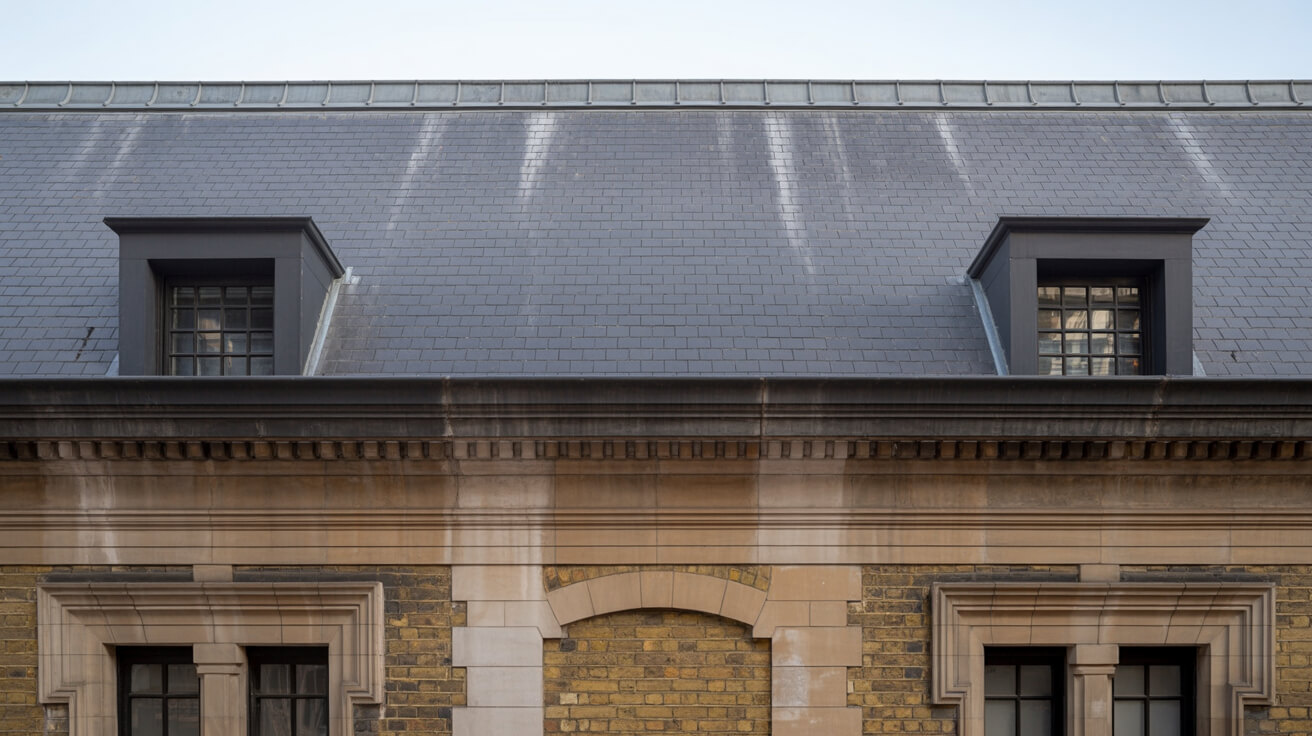
Professional Roofing Services in Eton mitigate these risks—improving weather resistance, energy efficiency, and compliance with Building Regulations. For homeowners seeking peace of mind, landlords wanting reliable assets, and businesses prioritising safety, proactive care is a secure investment whatever the property’s purpose.
Our Roofing Services in Eton cover installations, repairs, upgrades, and heritage restorations for homes, businesses, and listed properties. We focus on long-term performance, full Building Regulations compliance, and use only high-quality materials from trusted suppliers. Every project is tailored to your building, ensuring safety, durability, and minimal disruption.








Every Roofing Services in Eton project adapts to your building’s use, roof style, and environment. This bespoke approach meets regulations, reduces disruption, and protects long-term value. Whether your site is a family home, a busy business, or an historic landmark, our methods ensure safety, efficiency, and reliability.
Homes, extensions, and listed buildings.
Offices, retail, schools, and hospitality.
Warehouses, factories, and logistics sites.
Every Roofing Services in Eton project follows proven steps using quality materials. Each layer, whether it’s a new build, upgrade, or a repair, contributes to safety, durability, and efficiency while meeting all regulatory standards.

Get a free, no-obligation quote today.
Our experts are standing by to help you choose the perfect flat roofing solution.
⏱ Response within 24 hours guaranteed
Accredited by Which Trusted Trader, CITB, and approved by Kemper and Westwood, our team delivers safe, compliant, and warranty-protected Roofing Services in Eton projects. These credentials guarantee high standards and enduring value—consistently reflected in client reviews praising our quality, professionalism, and trustworthiness.


Complete reroofing. Living in Singapore at the time and T was super responsive and communicative.
Replacement of lead box gutter and new flashing to parapet wall. I had an excellent experience using James and the team. He was very prompt in all aspects of communication and completed a first class job. Really pleased.
James completed some repairs on our roof and replaced some of our pebble dash by the roof as well. He was very thorough and fixed everything. He kept us really informed by taking photos and showing us what he did and keeping us updated. It also went onto our neighbours roof and he did the same fo...
We had a leak in our bedroom and James fixed the roof for us to stop it from leaking. All the work came with a warranty. The work that was carried out was good. James and his team were polite, and did all the work quickly and without too much interruption to our day-to-day lives. Would recommend ...
J G Leadworks have repaired and replaced the roofs and gulleys over our warehouse and workshops which have meant both areas are now watertight
James and team were incredibly responsive to my request to look at a serious leak issue on my flat roof. They did a very thorough investigation and explained in detail the issue and gave a fair quote. They were quick to book in and complete the work and have checked in afterwards a few times to m...
James was quick to respond to the initial contact and was able to work around some time constraints I had. He explained what needed doing clearly and was happy to answer follow up questions. He took pictures to show each stage and I feel confident in the work that was done by James and the team. ...
JG Roofing were very easy to work with. Their quote was sensible and they stuck to that figure. They completed many repairs to my roof including, rebuilding a leaded gutter, reinforcing rotten rafters, rebuilding a long felted gutter and felting parapet walls, resurfacing and felting a flat roof,...
Planning and legal checks protect clients from costly errors, delays, and non-compliance, ensuring roofing projects meet regulatory and safety requirements.
Permission is typically needed for listed buildings, conservation areas, or major roof works. Every project must comply with Building Regulations, including Part A (structure) and Part L (energy efficiency), to guarantee legal, future-proofed roofing.
Our team manages it all—from initial survey and legal guidance to paperwork and local authority liaison. Whether it’s a modern extension or a heritage site, everything is delivered legally, safely, and with minimum disruption so you enjoy complete peace of mind.
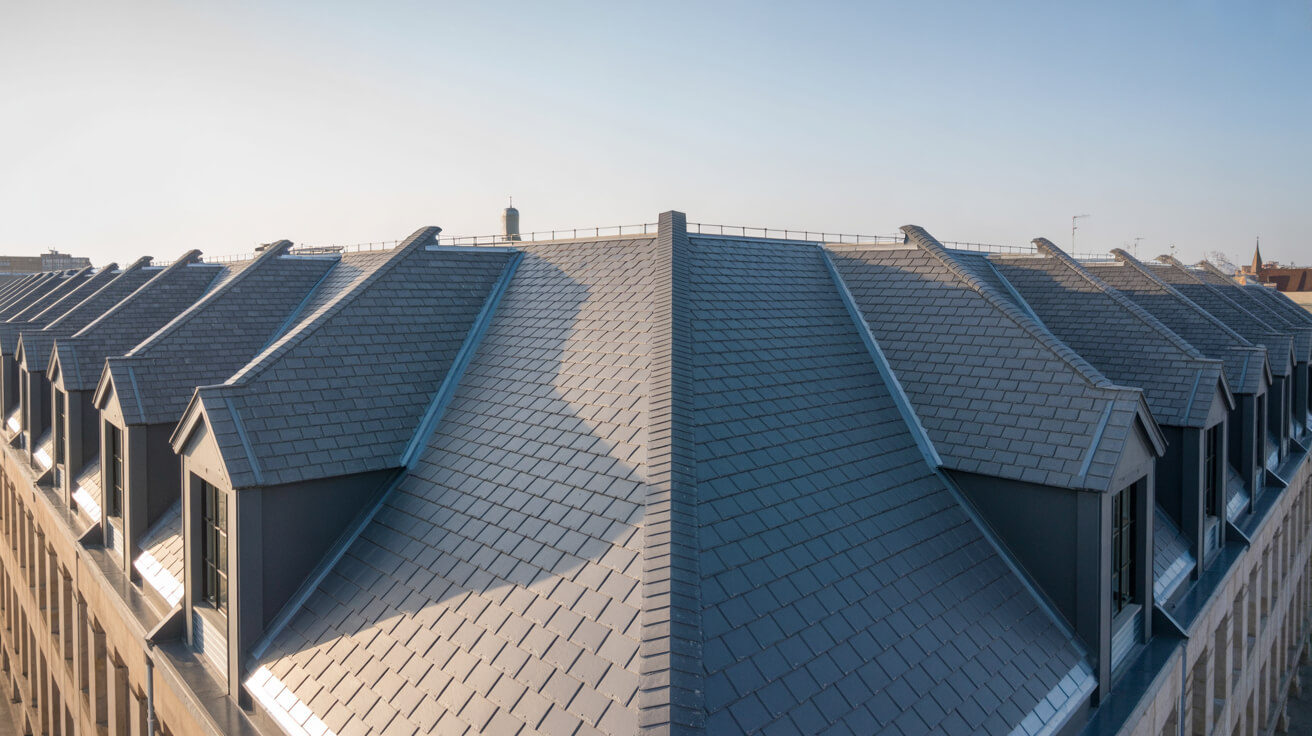
Every project unites skilled workmanship with rigorously tested materials.

With 25 years of experience in lead sheet roofing, James is a trusted expert in heritage roofing, slate, and tiling. His knowledge of traditional methods, paired with modern compliance, makes him a go-to specialist for projects that demand both craftsmanship and durability.
Roofing Services in Eton provides lasting protection, efficiency, and value, delivering durable, compliant roofing solutions that safeguard every type of property investment.
Selecting Roofing Services in Eton involves balancing durability, budget, compliance, and aesthetics to secure the best-fit roofing solution for your property.
Why Clients Choose JG Leadwork and Roofing
With decades of trade experience, our teams understand the unique demands of London and Home Counties roofing. From heritage-listed properties to contemporary extensions, we adapt solutions to local regulations, weather conditions, and architectural styles with precision.
Accredited by Which Trusted Trader, CITB, and approved by Kemper, Westwood, IKO, ALM, and other leading suppliers.
These credentials guarantee safety, compliance, and access to manufacturer-backed warranties, giving clients peace of mind that their project meets the highest professional standards and benefits from warranty protection.
Our heritage projects use Welsh Slate and handmade clay tiles for authenticity, while leadwork is delivered to Lead Sheet Association (LSA) standards. Commercial installations employ Kemper and Westwood liquid systems for durability and efficiency. Each example demonstrates our reliability, blending traditional craftsmanship with modern performance.
Our workforce includes skilled roofers, heritage specialists, and safety-certified installers.
Every roofer holds NVQs, receives ongoing CPD training, and is qualified in both modern flat systems and traditional techniques, including slate and leadwork.
Team structure ensures projects run smoothly—surveyors identify needs, installers deliver with precision, and supervisors oversee compliance. This approach minimises disruption, accelerates timelines, and guarantees consistent quality across residential, commercial, and industrial roofing projects.
Every project is regulation-compliant, warranty-backed, and focused on long-term results.
Client testimonials and case studies confirm our track record, with projects praised for professionalism, durability, and customer support.
We go beyond installation with aftercare packages, maintenance support, and open communication at every stage. Property owners gain reassurance that JG Leadwork and Roofing stands behind its work. Book a free survey today and discover why homeowners, landlords, and businesses trust us with their roofing.
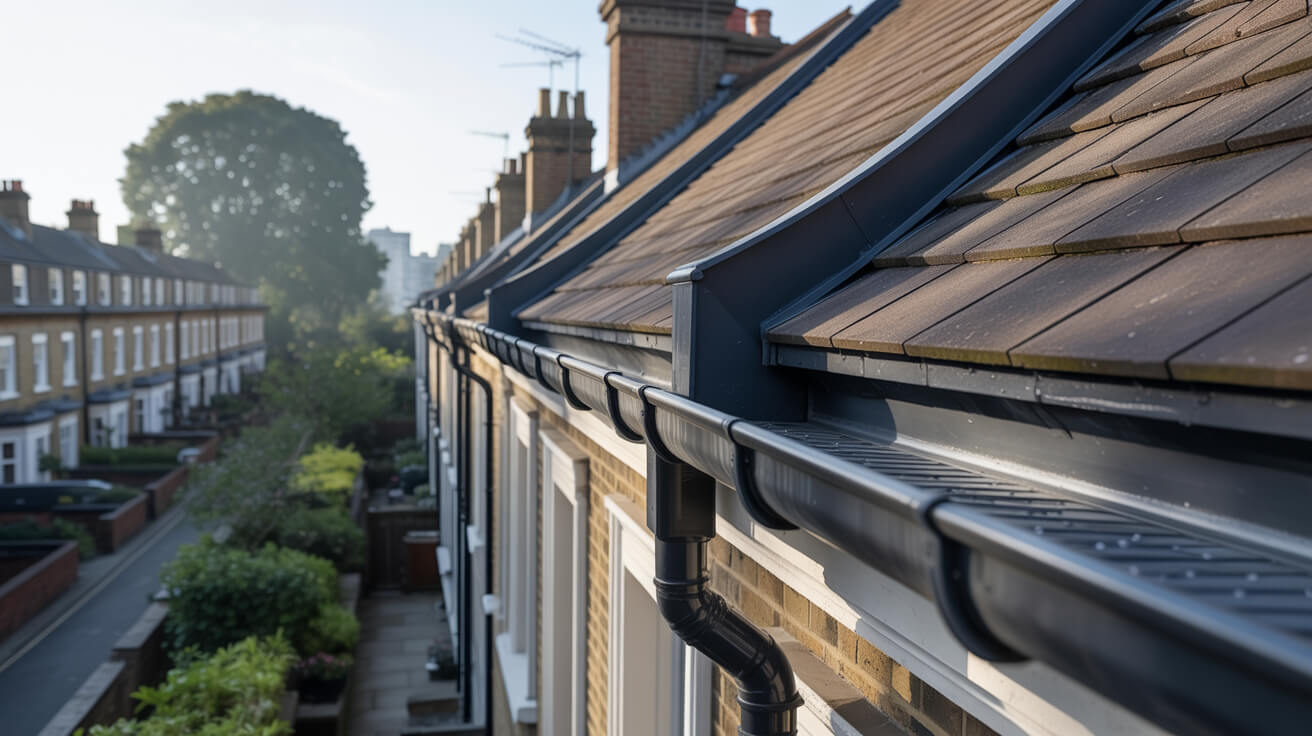
Get a free quote, rapid response, and expert service across London and the Home Counties. Contacting JG Leadwork and Roofing is your simple first step to dependable roofing solutions.
We source materials from leading suppliers including Supreme and IKO felt systems, Kemper, Westwood and Proteus liquid systems, Welsh Slate, handmade clay tiles, ALM Lead Mills, and Nicholson Air Track. These trusted brands guarantee durability, compliance, and warranty-backed performance across flat, pitched, heritage, and commercial roofing projects.
.
.
For homes, Roofing Services in Eton safeguards comfort and enhances kerb appeal with durable, energy-efficient systems. Whether modern extensions or traditional pitched roofs, tailored solutions improve living standards and protect property value.
For businesses, Roofing Services in Eton delivers cost-effective, large-scale installations with minimal disruption. Projects are planned around operations, with safety compliance, energy performance, and flexible scheduling built in—supporting offices, retail, schools, and industrial facilities with reliable, regulation-ready outcomes.
For heritage properties, Roofing Services in Eton combines authentic materials such as Welsh slate, handmade clay tiles, and ALM lead with skilled conservation techniques. Listed building consent and conservation requirements are fully managed, ensuring traditional character is preserved while integrating modern weatherproofing. This careful balance provides long-term durability without compromising historic integrity or aesthetic value.
JG Leadwork and Roofing delivers Roofing Services in Eton across housing, commercial, heritage, and public sectors. Every industry comes with unique requirements, from safety and compliance to efficiency and conservation. Our adaptability ensures projects are delivered with precision and professionalism—whether safeguarding homes, supporting business continuity, preserving history, or protecting critical public and healthcare facilities.
Durable roofing installed with minimal disruption, ensuring safe, regulation-compliant workspaces for staff and visitors.
High-standard, compliance-focused solutions protect community facilities while meeting strict safety and regulatory obligations.
Heavy-duty roofing tailored for wide spans, ventilation, and long-term maintenance efficiency.
Authentic materials and sensitive methods preserve historic character while adding modern protection.
Weatherproof systems that enhance kerb appeal and guarantee uninterrupted trading for outlets.
Tailored roofing improves guest comfort, safety, and ambience across hotels, restaurants, and venues.
Safe, durable systems designed for schools and universities with minimal learning disruption.
Specialist roofing solutions built for hygiene, safety, and regulatory compliance in medical environments.
Our team of NVQ-qualified roofers, LSTA-trained specialists, and health & safety-compliant professionals bring decades of combined experience. Every project is delivered with meticulous attention to detail, ensuring safe practices and consistent quality across flat, pitched, heritage, and commercial roofing disciplines.
Expertise includes heritage leadwork, slate and tile roofing, modern flat systems, and drone-assisted roof surveys. Ongoing CPD training ensures adaptability to both traditional craftsmanship and the latest innovations—giving clients confidence that every roof is built or repaired with proven skill and care.
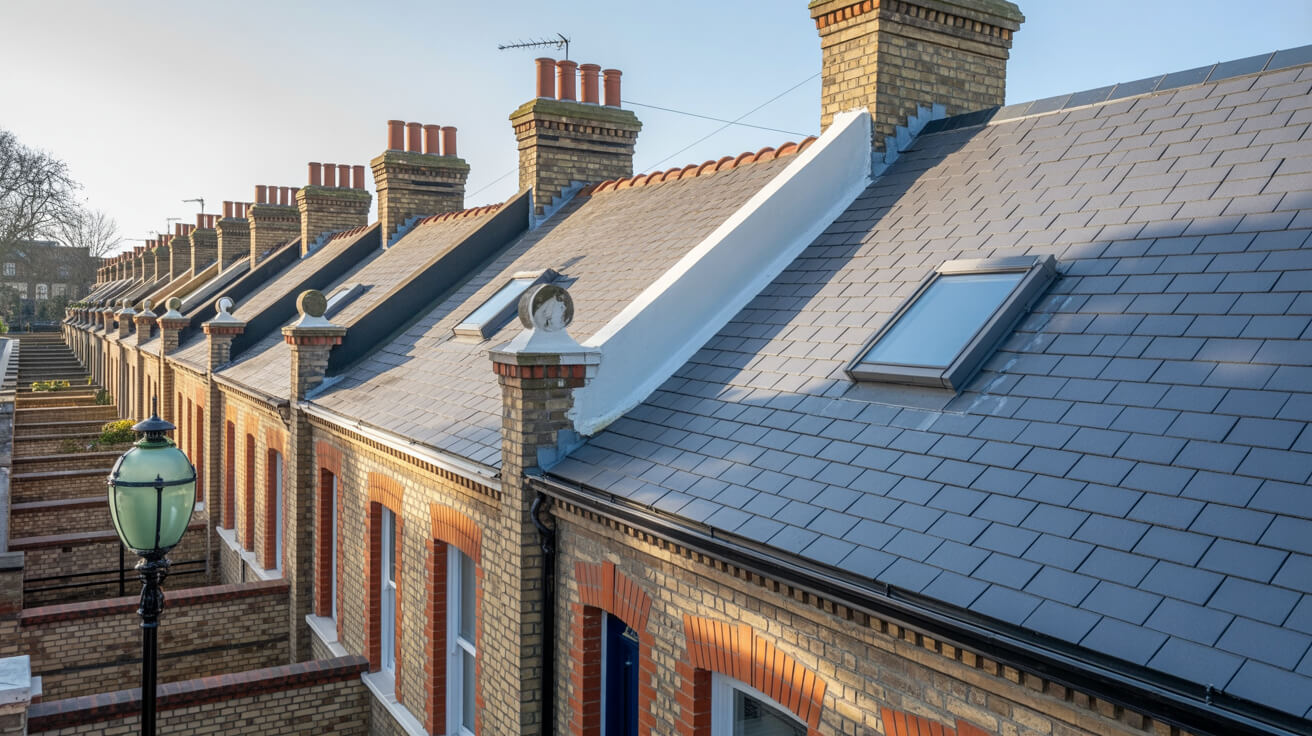
A thorough survey highlights existing issues, structural considerations, and upgrade opportunities, ensuring the best-fit solution is identified from the very beginning.
Transparent, itemised quotes detail costs, timelines, and materials—giving you complete clarity and confidence before work starts, with no hidden surprises.
Scaffolding, access solutions, and robust safety measures are put in place to safeguard both property and people throughout the project.
Skilled roofers complete the work using accredited materials and proven techniques, delivering durable, compliant results while keeping disruption to a minimum—whether for repairs, replacements, or new installations.
Each stage is inspected against manufacturer standards and Building Regulations, with photographic documentation provided for transparency and peace of mind.
Each stage is inspected against manufacturer standards and Building Regulations, with photographic documentation provided for transparency and peace of mind.
In a competitive roofing market, many providers look the same on paper. JG Leadwork and Roofing stands out through proven expertise, accredited methods, and specialist techniques. Our combination of traditional craftsmanship and modern technology makes us the safer, smarter choice across residential, commercial, industrial, and heritage projects.
In a competitive roofing market, many providers look the same on paper. JG Leadwork and Roofing stands out through proven expertise, accredited methods, and specialist techniques. Our combination of traditional craftsmanship and modern technology makes us the safer, smarter choice across residential, commercial, industrial, and heritage projects.
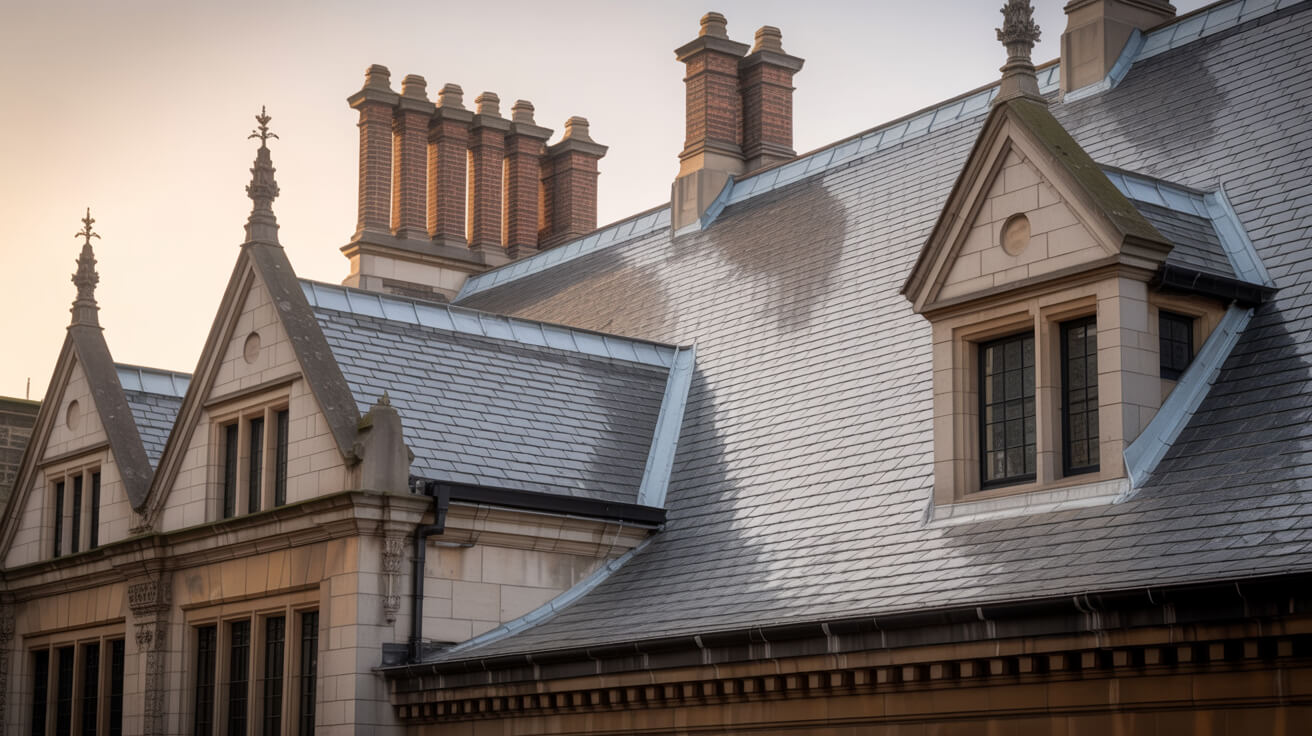

At JG Leadwork and Roofing, every project follows a structured QA process. Each stage—materials, installation, safety, and final sign-off—is measured against manufacturer specifications and UK Building Regulations to ensure durability, compliance, and warranty-backed performance across all roofing services.
Projects are only signed off once all QA checks are complete, giving clients confidence in long-term performance, structural safety, and insurance-backed peace of mind.
Every Roofing Services in Eton project by JG Leadwork and Roofing is delivered in strict alignment with UK Building Regulations and recognised frameworks. This ensures structural safety, energy efficiency, durability, and protects warranties and insurance coverage across residential, commercial, industrial, and heritage properties.
Clients can be confident their project is completed legally, safely, and insurance-ready—delivering long-term performance, compliance assurance, and complete peace of mind.
Property owners often wonder about Roofing Services in Eton—from costs and timescales to permissions. Below, you’ll find straightforward, trustworthy answers to the most frequent and practical queries.
Roof leaks after heavy rain are a widespread concern for property owners, contractors, and developers across the UK due to relentless wet weather, older housing, and intricate construction details. Addressing these leaks quickly helps prevent interior water damage, mould growth, rotten timbers, and costly insurance claims. Understanding the main root causes gives anyone managing a building the clarity to prevent recurrent problems. Below is a structured breakdown of technical triggers, environmental and design factors, and practical inspection strategies.
A leading cause of leaks after rain is the failure of the primary waterproofing system—membrane on flat roofs; tiles or slates on pitched roofs. Over time, weathering—especially through the UK’s freeze–thaw cycles—can crack, split, or render these coverings porous. Slipped or broken tiles allow rainwater past the outer barrier on pitched roofs. On flat roofs, materials such as bitumen felt, EPDM, GRP, or asphalt may blister, tear, or split at seams. These failures let rain into the roof system, often first seen as ceiling or wall stains, and risk damaging timber and insulation. Leaks from membrane faults usually show up hours to days after prolonged rainfall. Left unresolved, the problems escalate to widespread damp, structural decay, or electrical hazards.
Flashing—thin metal strips, usually lead or zinc—seals joints between roofs and building features like chimneys, parapets, or valleys. In Eton’s changeable climate, flashings are stressed by thermal movement, wind uplift, or the gradual break-down of sealants and fixings. Faulty or aged flashing can cause “tracking” leaks, where water follows the joint instead of being shed off. This is often spotted as brown stains or bubbling paint around chimneys, skylights, or joins with walls. Other detail failures, such as poor finishing at roof edges or around pipes, expose weak points. Blocked drainage from moss or debris lets water pool up and seep into gaps. If left, both issues cause persistent leaks and gradual damage to insulation, plaster, and even the building framework.
Environmental and design shortcomings frequently worsen leaks after heavy rain. Ponding—the accumulation of standing water on flat roofs—often results from inadequate slope (“fall”) and directly tests waterproofing seams. UK Building Regulations (especially Part L) require proper insulation and ventilation to prevent interstitial condensation—when indoor moisture gets trapped inside roof structures and condenses, hidden from view. This weakens timbers and membranes, making them more vulnerable during storms. Poor drainage, such as blocked outlets or gutters, also leads to overflow and localised soaking. Signs include water lying for more than 24–48 hours after rain (higher risk above 5 mm depth), streaks or moss patches, and flat-roof “shadow lines” where damp repeatedly settles.
Diagnosing rain-induced roof leaks means combining traditional checks and diagnostic technology. Visual inspections check tile or slate alignment, cover condition, flashing, and drainage. For tricky or large roofs, drone imaging helps pinpoint potential trouble spots. Moisture metres reveal internal damp under flat roof coverings; borescopes (cameras inserted into the roof build-up) expose obscured damage. Where leaks persist, a core sample (a small plug removed from the roof) may reveal layers damaged by saturation or decay. In condensation-prone settings, thermal imaging spots “cold bridges” and identifies patchy insulation. Property owners benefit from routine inspections—ideally after storms and at least annually—to catch membrane wear, flashings, or drainage issues early, before they cause extensive internal repairs.
Common cause → Key symptom → Risk if ignored → Indicative remedy:
| Cause | Symptom | Risk if Ignored | Indicative Remedy |
|---|---|---|---|
| Split membrane | Ceiling or wall stains | Rot, mould, decay | Patch or replace membrane |
| Dislodged tiles | Dripping, daylight in loft | Structural damage | Repair tiles |
| Failed flashing | Staining at junctions | Chimney/wall harm | Renew or re-fix flashing |
| Blocked gutters | Overflow, moss streaks | Damp, wood rot | Clear gutters, improve fall |
| Poor insulation | Condensation, mildew odour | Mould, decay | Upgrade insulation/vent |
When re-roofing a property in Eton or elsewhere in the UK, the decision between slate roofing and tile roofing will have a direct impact on cost, appearance, and regulatory compliance. Both materials are widely used, but price is shaped by a combination of their technical properties, installation complexity, and region-specific factors like conservation status or local building control. For any property owner or manager planning works, understanding these variables helps with budgeting and ensures finished roofs meet UK standards.
Choosing between slate and tile isn’t just about the initial spend—future maintenance, compliance, and whole-life value often matter more.
The material cost of slate is generally much higher than for most roof tiles. Natural slate, especially when sourced from British or top-quality European quarries, is considered a premium product with exceptional durability and longevity—often more than 100 years. In comparison, tiles, typically made from concrete or clay, span a much broader price range. Standard concrete tiles are the most affordable; machine-made clay tiles cost more; hand-made or heritage clay tiles can approach the price of slate in some cases. Availability shapes cost further: local quarry slate or mass-produced tile incurs less transport, while imported premium or heritage materials command a premium.
Finishes, colour variations, and conservation requirements can all push these figures higher.
Installation methods drive a second major cost difference. Laying slate is labour-intensive, requiring skilled trades to cut, hole, and fix each slate individually, often to the standards set by BS 5534 (the main UK code for slating and tiling). Steep pitches, valleys, and hips all add further complexity. Many modern tiles use larger, interlocking formats that go down much faster, reducing hired labour time. That said, any roof—slate or tile—must be built to comply with Building Regulations (Part A for structure, BS 5534 for fixing and wind resistance).
Costs may rise for scaffolding, disposal, or repair work on the underlay and battens beneath the main covering.
Regulation and heritage status frequently sway both the permitted material and its cost. Properties in conservation areas or those that are listed may be legally obliged to use natural slate or traditional clay tiles that match historic fabric. Using any alternative, even cost-saving, may require specific planning approval—or risk enforcement action. Part L of the Building Regulations dictates energy performance standards (measured by “U-value”—a test of heat flow through materials). Both slate and tile roofs must reach a minimum U-value, sometimes demanding extra layers: insulated sarking, specialist underlay, or added insulation boards.
Material prices and labour rates vary by geography and current market factors. Roofing in Eton—and London/South East generally—tends to be more costly due to higher labour rates, stricter waste regulations, and increased delivery and access costs. Heritage area works (common in Eton) further limit available choices and can extend lead times if specific slates or tiles must be sourced. Weather exposure, nearby listed buildings, and planning interpretations all introduce extra risk to timelines and budgets.
| Factor | Slate (£/m²) | Tile (Concrete/Clay, £/m²) | Why it matters |
|---|---|---|---|
| Material cost | 30–50 | 10–40 | Slate premium, tile varies |
| Labour cost | 40–60 | 25–45 | Slating is slower, more skilled |
| Typical lifespan (yrs) | 80–120 | 40–70 | Slate often lasts decades more |
| Regulatory constraints | High – in heritage areas | Variable | May dictate allowed material |
Factoring in all influences—material, skill, compliance, region—ensures informed, cost-effective roofing decisions that safeguard regulatory approval and long-term value.
The time required to instal a new roof in the UK varies depending on roof type, property size, structural complexity, and factors such as weather or planning restrictions. For most homes, a straightforward roof replacement can be completed within three to five working days. Larger commercial projects or heritage properties often require extended periods, ranging from several days to multiple weeks, due to their scale, specialist methods, or preservation requirements. Understanding typical timelines is essential for cost forecasting, minimising disruption, and maintaining building safety—especially if weather exposure or underlying defects are a concern.
For facility managers, landlords, or those overseeing listed buildings, timelines may also be influenced by compliance checks, specialist materials, or heritage constraints. Factoring these elements in from the beginning supports better project planning and reduces unexpected delays.
Typical durations vary by the type and complexity of the roof:
Work proceeds in stages: safe access/scaffolding → removal and inspection → substrate repairs → weatherproofing layers → main covering → detail work (e.g., flashings, gutters) → snagging and clean-up.
Installation times are often affected by site-specific or external factors:
Regular maintenance protects against early failures and maximises roof lifespan:
Small repairs, such as resealing a felt joint or replacing an individual slate, can prevent costly water damage.
| Material | Typical Lifespan | Inspection Cycle | Key Maintenance Tasks |
|---|---|---|---|
| **Natural Slate** | 80–100 years | Every 5 years | Replace broken slates, remove moss |
| **Clay Tile** | 50–70 years | Every 3 years | Replace cracks, monitor mortar |
| **Concrete Tile** | 40–60 years | Every 3 years | Check for slip, edge erosion |
| **Built-up Felt** | 12–20 years | Every 2 years | Seal laps, patch splits |
| **EPDM Rubber** | 25–40 years | Every 3 years | Clear outlets, inspect seams |
| **Liquid Systems** | 20–40 years | Every 3 years | Recoat exposed areas, check for UV wear |
Longevity depends on regular maintenance and site exposure, including physical factors such as wind, debris, and the freeze–thaw cycle (repeated freezing and thawing that can crack roofing). Professional inspections help ensure issues are found early, protecting the asset’s value and reducing risk of major repairs.
Understanding how roofing costs, warranty protections, and installer credentials impact long-term value is essential when maintaining or upgrading a property in Eton. The sticker price of a repair or replacement is just the start—future expenses, property saleability, and insurance eligibility all hinge on getting skilled workmanship, strong guarantees, and compliant paperwork. Homeowners want to avoid hidden liabilities, landlords need predictable investments, and businesses seek confidence that their roofs won’t undermine insurability or asset value.
Roofing prices in Eton depend on the service scope, property design, and access issues. Routine repairs—fixing leaks or replacing a few tiles—tend to be affordable, but costs increase quickly for complex jobs or where scaffolding and specialist access are required. Full roof replacements are a significant investment, typically justified only when underlying issues or age make patch repairs ineffective.
| Service Type | Typical Range (UK) | Key Influences |
|---|---|---|
| Roof Repair | £250 – £1,200 | Damage type, access, patch size, material choice |
| Roof Replacement | £5,000 – £15,000+ | Size/shape, need for timber work, insulation upgrade, high-end finishes |
Labour is the biggest outlay, often exceeding 50% of the budget, reflecting the specialised skills required. Material costs vary with your choice (e.g., slate, lead, or asphalt), while heritage buildings or properties with awkward access (common in Eton) can drive costs higher than national averages.
Professionally completed roofs should be backed by an insurance-backed warranty, usually covering 10 to 20 years. These warranties are underwritten by independent insurers—meaning they remain in force even if the installer or manufacturer is no longer in business. They typically cover faults with materials, poor installation, and, if substrate was certified at the outset, structural issues.
Warranties do more than offer peace of mind. Evidence of a valid, insurance-backed warranty is now a standard requirement for many lenders, insurers, and buyers in the UK. It helps prove Part L compliance (thermal standards and energy efficiency) and can avert disputes if hidden defects arise years into ownership. Insurers may also insist on valid warranties before extending cover or approving claims, while missing paperwork can undermine a property’s resale value.
A competent accredited installer brings expertise and accountability. Industry-recognised qualifications—such as NVQs in roofing, CITB safety training, and verified membership in Which? Trusted Trader or the Competent Roofer Scheme—demonstrate that a tradesperson understands the latest methods, regulatory changes, and site safety expectations.
Installers recognised by product manufacturers can supply longer material guarantees, and their familiarity with regulations helps ensure all work passes Building Control checks. Choosing an accredited contractor makes documentation for future insurance or property sale smoother, and lowers the risk of costly compliance failures.
Opting for the cheapest fix or using unqualified labour might seem tempting but often leads to expensive consequences. Shortcuts—like reroofing over rotten timbers, skipping insulation upgrades, or omitting proper ventilation—can cause undetected rot, leaks, and early roof failure, even if the surface looks new.
Insurers may reject claims on roofs lacking compliant paperwork or warranties. Properties without valid Part L or BS5534 compliance often face a hit to resale value or future legal complications. Ultimately, any upfront saving can be erased by emergency repairs, insurance refusal, or major structural work needed to correct avoidable mistakes.